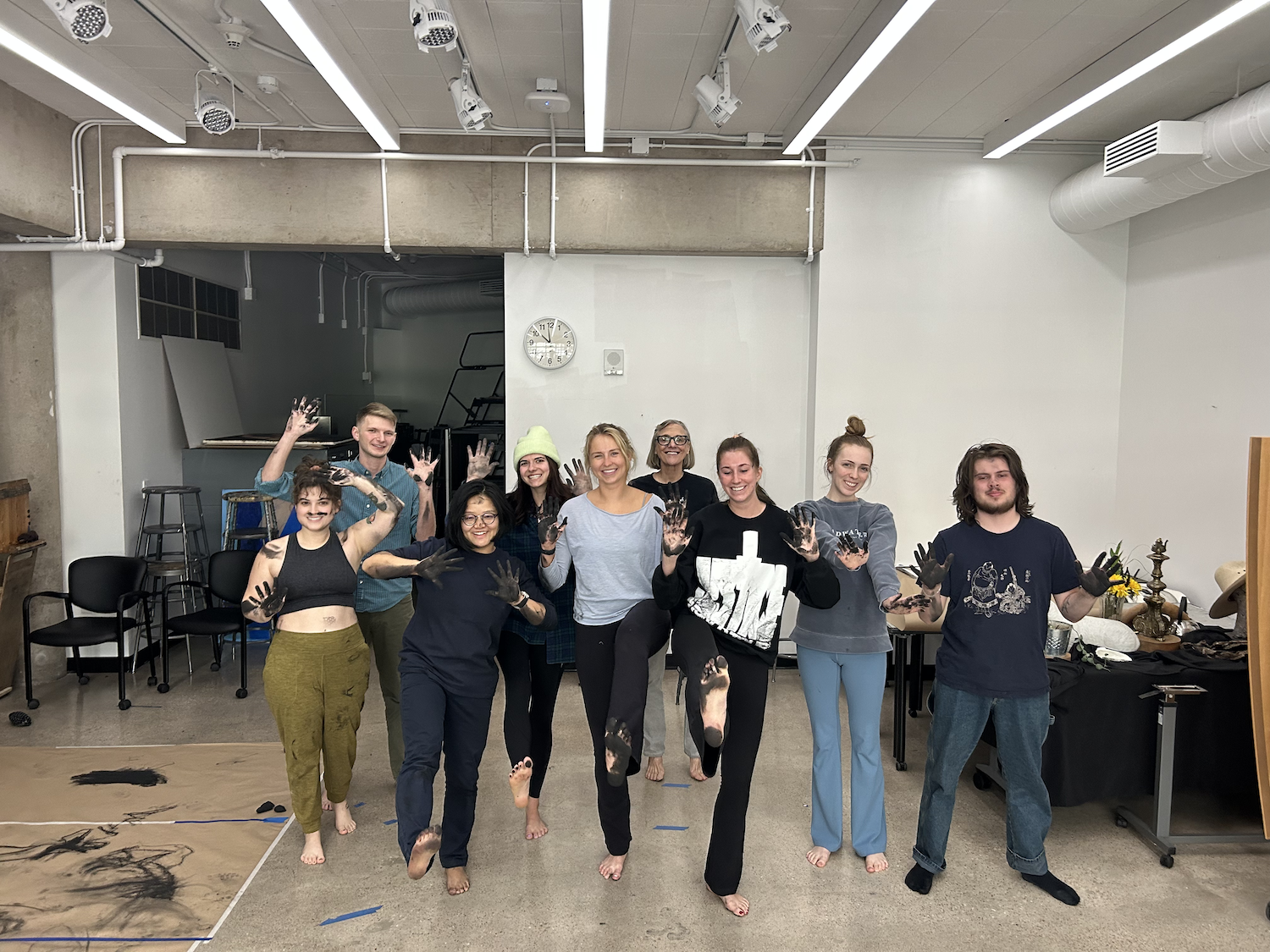
Undergraduate and graduate drawing students explored the significance of the body and gestural elements, culminating in a group performance using charcoal.
School of Art Assistant Professor Dan Jian collaborated with Nina Martin, a professor at the School for Classical & Contemporary Dance, to lead undergraduate and graduate drawing students in the interdisciplinary workshop “Artists’ Interior.” Centered on Martin’s “ReWire Movement Method,” students explored the significance of the body and gestural elements, culminating in a group performance using charcoal.
“Realizing I knew only 10 or 15% of my actions on stage, I became intrigued by this preconscious movement,” explained Martin. “If around 90% of my performance is unconscious, understanding that became my focus.”

Nina Martin guiding students through the process of learning her ReWire Movement Method.
Trying to intentionally access that preconscious movement state, Martin spent hours lying on the studio floor studying her nervous system. This exploration led to the development of the ReWire Movement Method, featuring two states—kinetic and neuronal. It employs nonrepetitive, random movements to release cognitive control.
“I emphasize gestural drawing in my classes as a means to switch off cognitive thinking and embrace intuitive responses, which is a struggle for both beginner and advanced students,” said Jian. “While reviewing faculty portfolios in fall 2019, Martin immediately captured my attention; she filled this gap in a completely different department.”
Jian reached out to Martin in fall 2022, marking the beginning of the interdisciplinary workshop for students to create expressive and dynamic charcoal pieces using the ReWire Movement Method.
“The charcoal was the first thing that stood out in Martin’s work, and I remember thinking, “If this is not gestural drawing, I don’t know what is,” said Jian.

The workshop culminated in a group performance using charcoal.
“As a dancer, I wanted to perform the material, specifically the swishing movement charcoal can create when drawing with it,” explained Martin. “I focus on embodiment and how to bring a visceral reaction to my audience. I’m fascinated by how, when observing a body move in this particular way, mirror neurons are firing, and you instinctively replicate what you’re watching inside your brain,” said Martin.
“When people don’t leave the theatre after the show, you know you’ve evoked something within them,” said Martin. “The movement is mesmerizing, and I’ve been performing and making films to capture these kinetic movements—a theme Jian is exploring in her classes.”
The workshop invited students at different stages of their practice to release control and foster empathy.
“The act of moving and dragging yourself across the floor with charcoal has a level of vulnerability, but at the same time, being vulnerable is powerful in itself,” said Jian.
“This work can evoke deep emotions through movement, and when they say the body has memories, it truly does,” said Martin.
“Somewhere in here, what I’m working on with my students is control, which is a fiction,” said Jian. “The beginner and advanced students must remember the body and trust their preconscious movement. Nina’s approach in dance is the same as my approach to understanding the importance of the hand, muscle and body memory.”
Learn how Nina Martin’s ReWire technique is aiding people with cerebral palsy.
